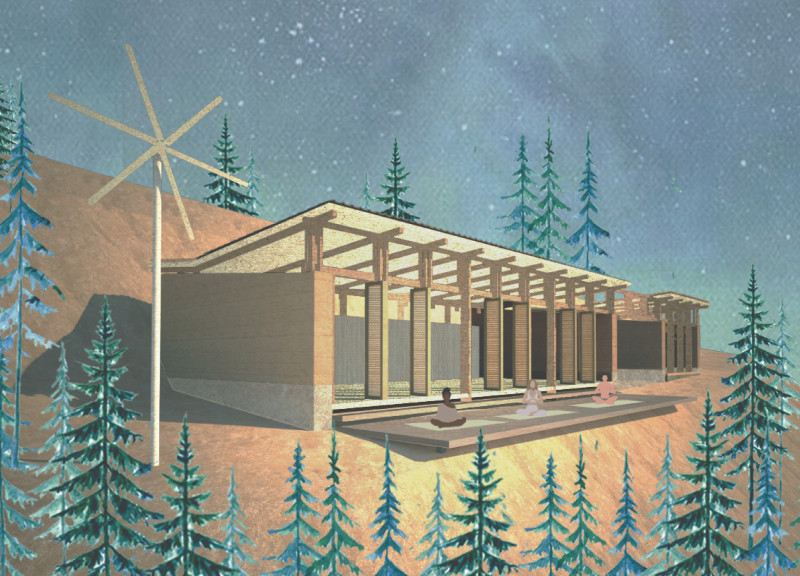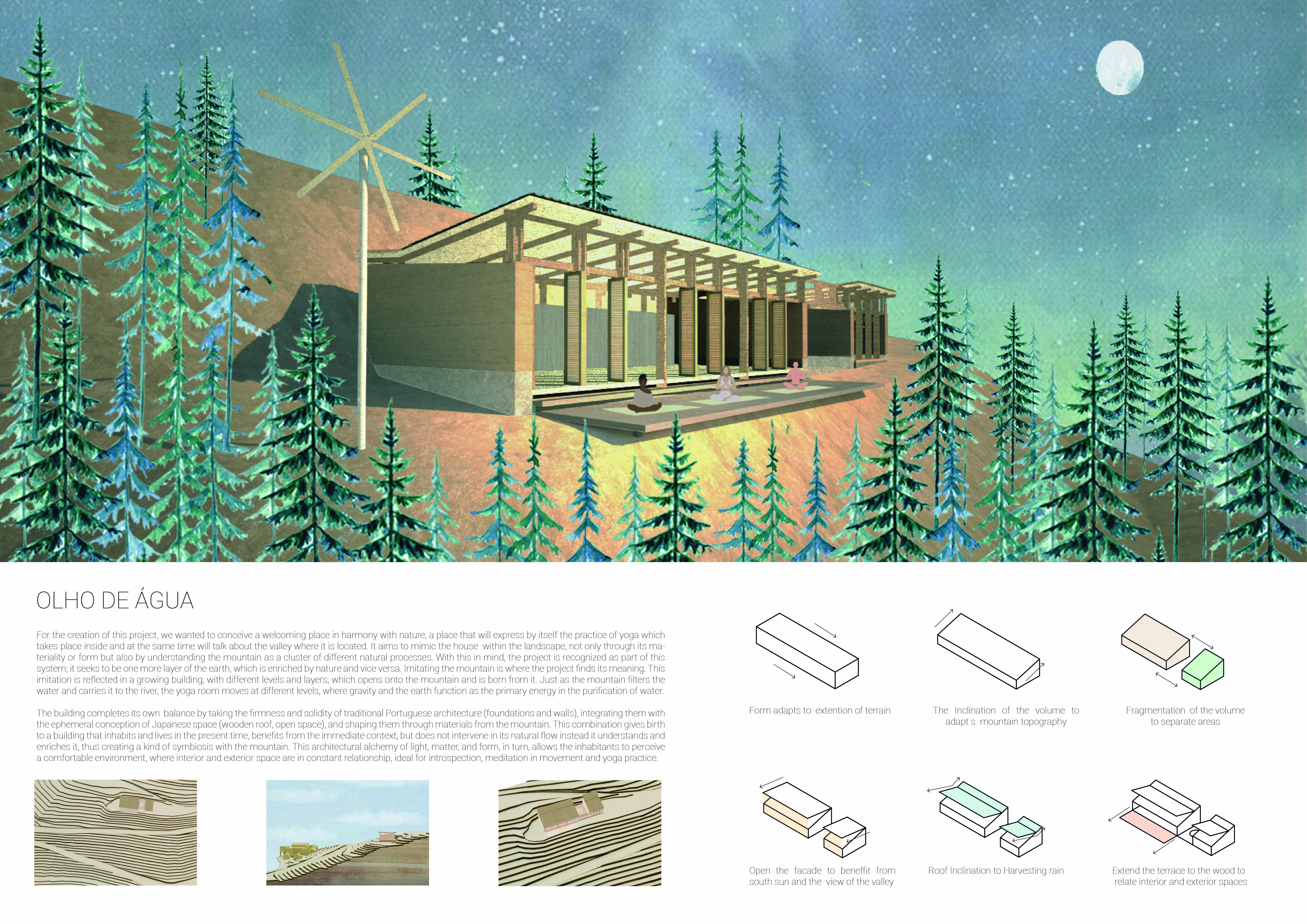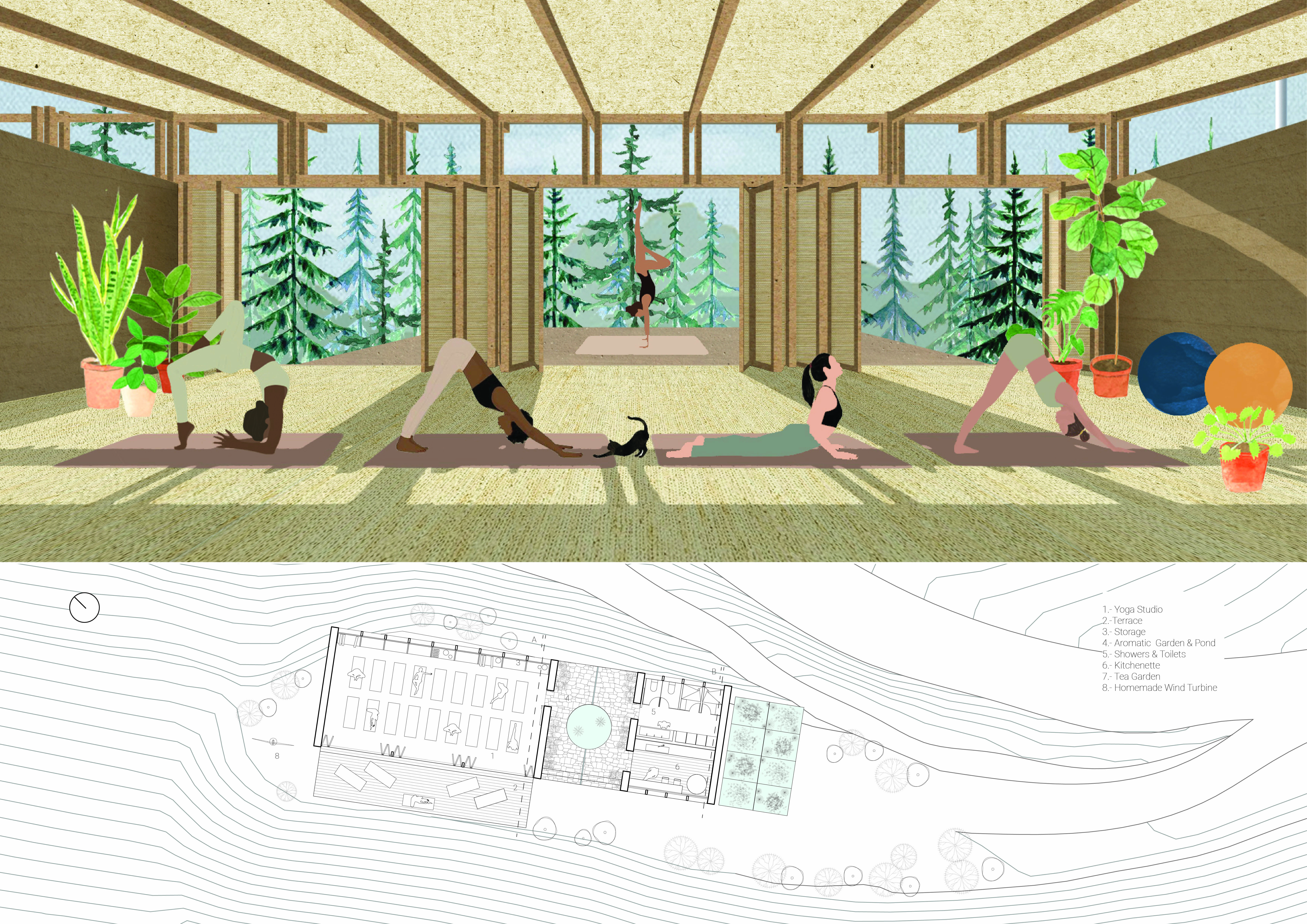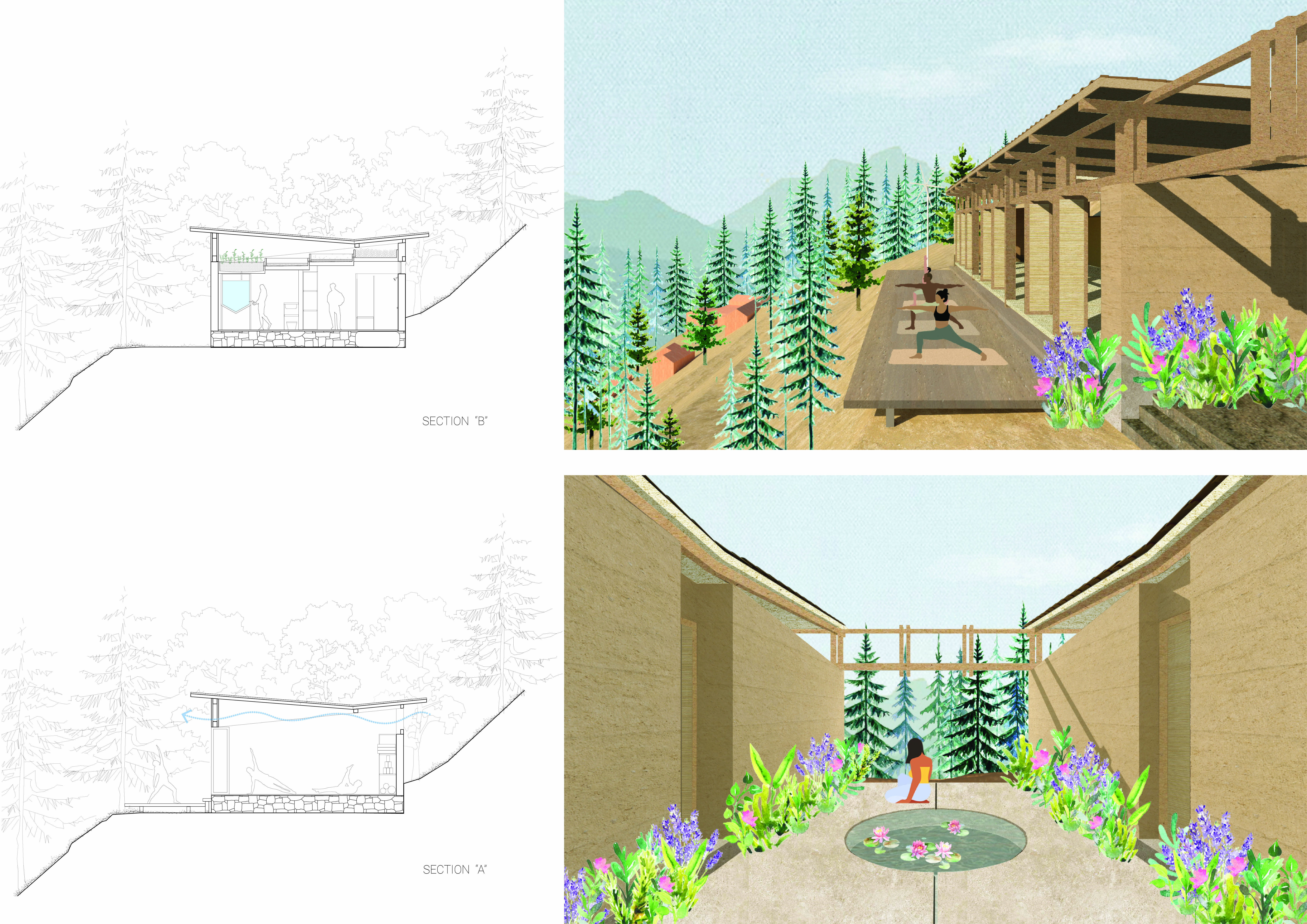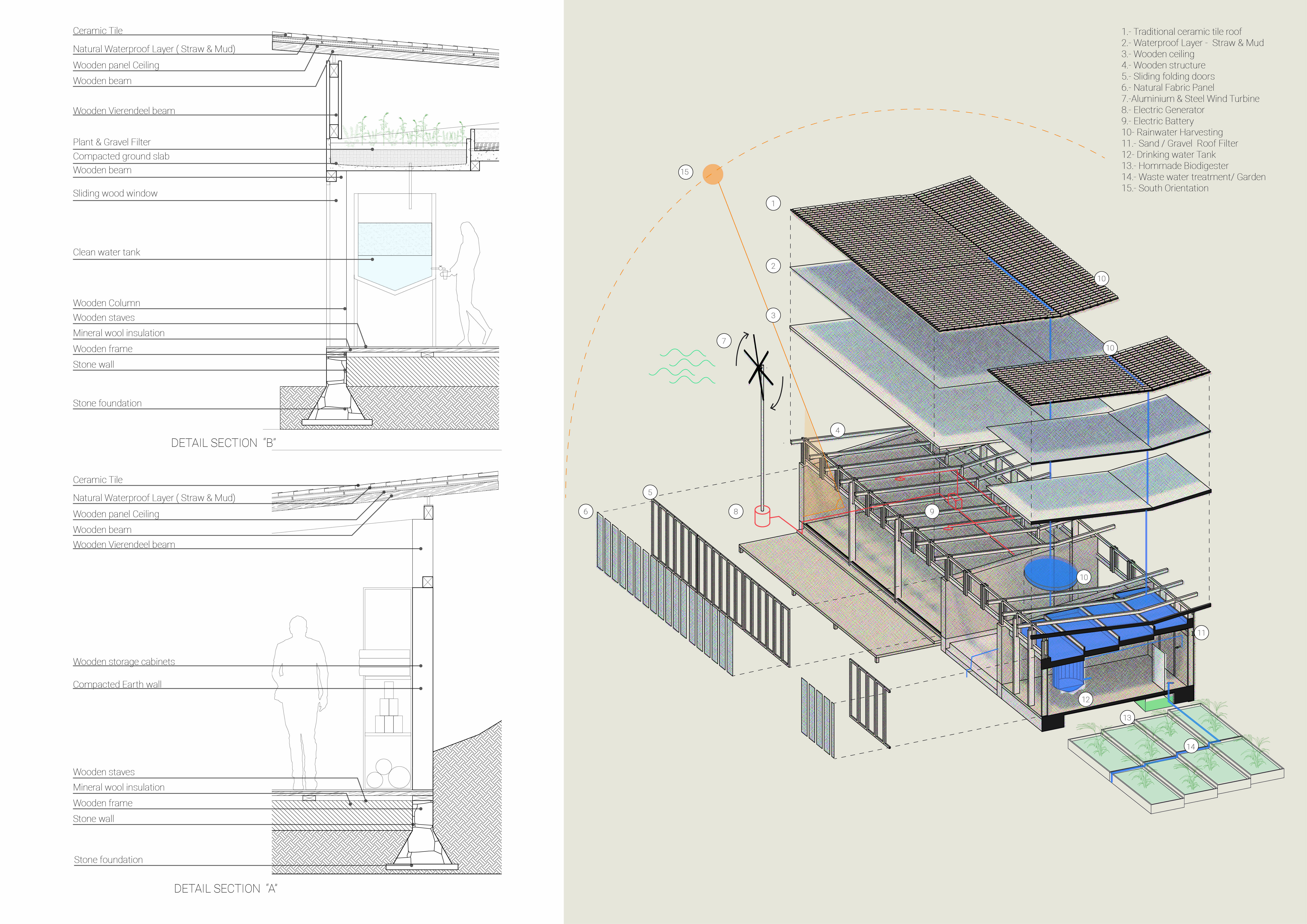5 key facts about this project
The "Olho de Água" project is an architectural design focused on creating a retreat space dedicated to yoga and mindfulness. Situated in a mountainous landscape, this facility emphasizes a deep connection with nature, allowing visitors to engage in wellness practices while being immersed in a tranquil environment. The architectural design integrates with the topography, providing serene views and an atmosphere conducive to reflection and personal growth.
Unique to this project is the thoughtful interplay between built and natural elements. The structure features a long, horizontal form that aligns with the slope of the terrain, enhancing the building's visual coherence with its surroundings. Large expanses of glass facilitate natural light and facilitate indoor-outdoor interaction, blurring the boundaries between the spaces. This engagement with nature is a central theme of the project, promoting a holistic experience for users seeking refuge from urban life.
One distinguishing feature of the "Olho de Água" project is its sustainable approach. The use of renewable energy systems, including wind turbines, illustrates a commitment to environmental responsibility. Furthermore, the building incorporates rainwater harvesting and a natural waterproofing layer to minimize its ecological impact. This functionality not only supports the building's operational needs but reinforces its position as a model for sustainable architectural practices.
Interior spaces reflect an adaptable design. The main yoga studio is spacious, allowing for various configurations tailored to different activities, whether for group classes or individual sessions. The emphasis on flexible layouts promotes interaction among users, facilitating community building within the serene backdrop. By using a natural palette of materials, including wood, stone, and ceramics, the design achieves an inviting atmosphere that resonates with the surrounding landscape.
For those keen to explore the full scope of the "Olho de Água" project, including detailed architectural plans and sections, further insights into architectural ideas and designs are available for review. Understanding the meticulous design processes that led to this unique architectural undertaking can provide valuable context and appreciation for the integration of wellness and sustainability in contemporary architecture.


